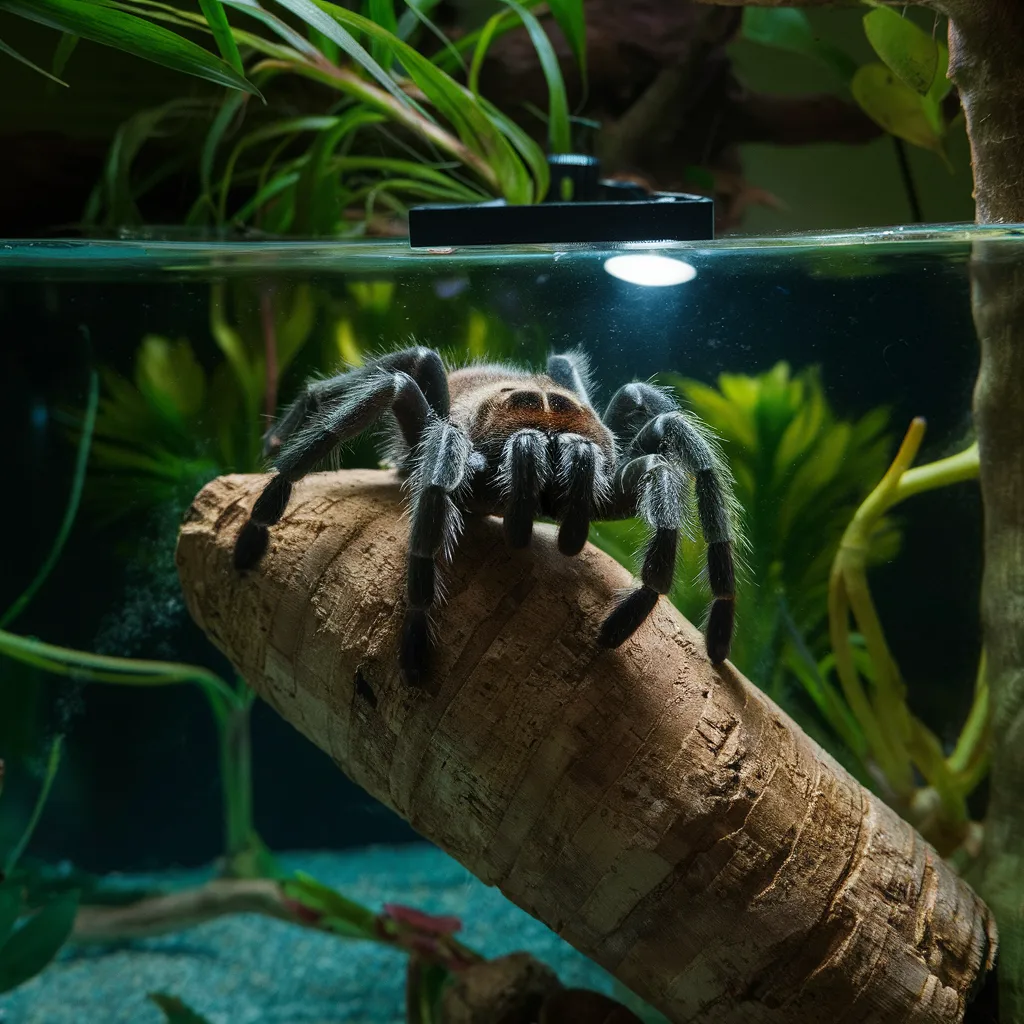The Enigmatic Arachnid: A Guide to Keeping Tarantulas as Pets

Tarantulas are fascinating creatures that have captured the interest of animal enthusiasts worldwide. Known for their impressive size and unique behaviors, tarantulas make intriguing pets for those looking for something different. If you’re considering bringing a tarantula into your home, here’s everything you need to know about caring for these enigmatic arachnids and providing them with a safe and stimulating environment.
Why Tarantulas Make Unique Pets
1. Low Maintenance
Tarantulas are relatively low-maintenance pets compared to traditional pets like dogs or cats. They require minimal space and can be fed a diet of insects, making them a suitable choice for those with limited space or time.
2. Fascinating Behaviors
Tarantulas exhibit a variety of interesting behaviors, such as web-spinning, burrowing, and molting. Observing these behaviors can be both educational and entertaining for pet owners.
3. Long Lifespan
With proper care, tarantulas can live for several years or even decades. This long lifespan allows pet owners to form a long-lasting bond with their arachnid companions.
4. Quiet and Odorless
Tarantulas are quiet and odorless pets, making them ideal for apartment living or for those with sensitivities to noise or smells.
Choosing the Right Tarantula
There are many species of tarantulas available in the pet trade, each with its own unique characteristics and care requirements. Some popular species for beginners include:
- Chilean Rose Hair (Grammostola rosea): Known for their docile nature and hardiness, Chilean Rose Hairs are a popular choice for first-time tarantula owners.
- Mexican Red Knee (Brachypelma smithi): With their striking colors and calm demeanor, Mexican Red Knees are another popular choice for beginners.
- Brazilian Black (Grammostola pulchra): Known for their velvety black appearance, Brazilian Blacks are prized for their beauty and relatively docile temperament.
Setting Up a Tarantula Enclosure
1. Enclosure
Provide a secure enclosure for your tarantula that allows for adequate ventilation and humidity. A terrarium or plastic container with air holes can make a suitable home for your arachnid companion.
2. Substrate
Use a substrate such as coconut fiber or peat moss to line the bottom of the enclosure. This substrate will help maintain humidity levels and provide a comfortable surface for your tarantula to walk on.
3. Hide
Provide a hiding place for your tarantula, such as a small flower pot or piece of cork bark. This hiding place will give your tarantula a sense of security and privacy.
4. Temperature and Humidity
Maintain a temperature of around 75-85°F (24-29°C) and a humidity level of around 70-80% in your tarantula’s enclosure. Use a thermometer and hygrometer to monitor these levels regularly.
Feeding and Care
1. Feeding
Feed your tarantula a diet of live insects, such as crickets, mealworms, or roaches. Offer food once or twice a week, depending on the size and age of your tarantula.
2. Handling
While some tarantulas can be handled, it’s important to approach handling with caution. Always wash your hands before and after handling your tarantula, and never handle them if you are feeling stressed or unwell.
3. Molting
Tarantulas molt periodically to grow larger. During this time, they may appear lethargic or reclusive. Provide a quiet and undisturbed environment for your tarantula during the molting process.
4. Health Check
Monitor your tarantula’s health closely and watch for signs of illness, such as changes in appetite, behavior, or appearance. Consult with a veterinarian experienced in exotic pets if you have any concerns.
Fun Facts About Tarantulas
- Venomous or Harmless: While tarantulas are venomous, their venom is typically not dangerous to humans. Most tarantula bites are no worse than a bee sting.
- Silent Hunters: Tarantulas are ambush predators that use stealth and camouflage to catch their prey. They are patient hunters, waiting for the right moment to strike.
- Molting Marvels: Tarantulas molt their exoskeletons to grow larger. During this process, they shed their old skin and emerge with a new, larger exoskeleton.
Conclusion
Tarantulas are intriguing and unique pets that can provide years of enjoyment for dedicated pet owners. By providing them with a suitable enclosure, a balanced diet, and regular care, you can ensure that your tarantula lives a happy and healthy life in your care. Embrace the fascinating world of tarantulas and enjoy the special bond that comes from caring for these remarkable creatures.



